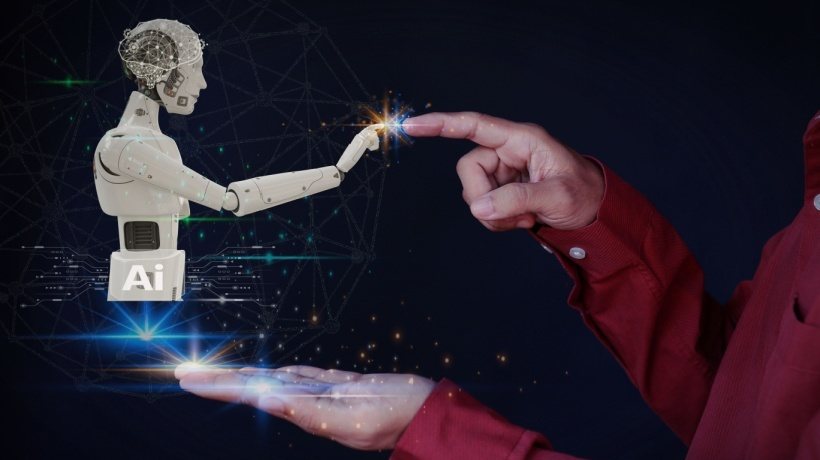Artificial Intelligence: What You Need To Know
It is an oft-heard term, Artificial Intelligence or AI. It has held different meanings for different subsets of the populace; most of the time, it can represent different things for a person at various points in their life. For instance, as most anyone who is a millennial will attest to, during our childhood in the early '90s, AI first stood for Skynet, the evil software in a dystopian future from the Terminator series’ of films that brings humanity to its knees. A little later, it represented the difference between how your mortal enemy in Super Mario Bros. 3, the turtle, reacts to your presence and how the face-hugging crabs would inhabit your worst nightmares. And, in Valve’s enduring first iteration of their celebrated Half-Life franchise, a ground-breaking, first-person-shooter from the late '90s.
As we entered the noughties, the Terminator series was settling into mediocrity and the earliest millennials were exiting their teenage years and moving into adulthood. The gaming industry was beginning to form into the behemoth that it is today, helped by the template established by Half-Life and also through advancements in available computing technology. Slowly but steadily, as decent AI was something that could be taken for granted by any shooter worth their salt, the average millennial Joe’s idea of AI shifted to how it was more and more part of one’s daily life and how it exerted its influence on the functionality of the World Wide Web as we know it today.
Times change, functions change, but the understanding of AI for the average human being has still hovered somewhere around the above-described scenario, even if one earns their bread and butter from the information technology milieu. It isn’t even necessary anymore to be an expert of any kind in information technology to be able to utilize AI. Everybody who has access to the internet (so basically everyone reading right now) is actively interacting with it knowingly or unknowingly, like when one comes across personalized online advertisements, "friend suggestions" on social media, or through using Siri, Google Assistant or Microsoft’s Cortana.
In the following piece, I will summarize the technology and how it is crucial for the success of eLearning as we go forward. This isn’t an attempt to capture the technology in a nutshell, which is not really possible given the vastness and the complexity of the field. It aims to be more like something for the uninitiated to fall back upon and correlate the technology with its obvious ally, eLearning.
What Is Artificial Intelligence?
If a machine is able to analyze information, factor in real-world variables, apply reasoning, and then draw a conclusion to a certain query, it can be categorized as AI. In simplified terms, the ability of any system to use human-like logic to think and perform tasks can be categorized as AI. It can be further broken down into strong AI and weak AI.
Strong AI can solve general, undefined problems as well or even better than what a human being can. Most people would associate their understanding of AI with this, and this is the primary contributor to the misunderstanding of scope and potential, suspicions, and general apathy toward the use of AI. Skynet and Replicants fall under strong AI, and they are exactly that, science fiction. In reality, strong AI will only be possible after at least 20-30 years worth of development.
Currently, weak AI is where we are at, enabling applications such as Siri, image recognition, recommendation systems, chatbots, humanoid robotics, gaming, and others. It refers to systems that solve specifically defined problems by using fixed methods. They gain experience and become more skilled by way of introducing new data.
Actually, AI, or weak AI, can be broken down into subsets like Machine Learning and deep learning.
What Is Machine Learning?
While Artificial Intelligence is used as a blanket term for what technology aspires to be, Machine Learning is grounded in reality. It can be defined as a subset of AI which allows a machine to automatically learn from available data. The idea of "learning" in Machine Learning is that the machine will continually look for patterns in vast amounts of data, and then deduce accurate results based on what the defined tasks are. If one introduces more data to the same system, it will analyze, or "learn," from the new data and update its conclusions to reflect the most accurate result.
It utilizes pre-defined algorithms, analyzes vast amounts of data, and works within the scope that it has been designed to provide the most accurate solutions. For public consumption though, marketers use the terms "Machine Learning" and "Artificial Intelligence" interchangeably.
AI And The Future Of eLearning
It beggars belief, how long it has taken for AI to enter the mainstream where eLearning is concerned; its use, still in its infancy today. Nevertheless, its potential in this field is steadily being realized, with more and more services recognizing its importance and incorporating it.
Traditional eLearning has often measured itself against the efficiency and retention achieved by traditional classroom training. It manages to stand on its own, but the didactical value there is still dependent a lot on the quality and focus of the actual content production itself. Today, blended learning tries to circumvent the pain points of a traditional, web-only eLearning format by introducing social and interactive elements, like live sessions with trainers, audio/visual segments, and user interaction based on social platforms. The content itself though is human-designed and static. AI will transform the static part of eLearning productions and give life to new learning experiences.
The success of recommendation systems in streaming services such as Netflix has paved the way for the real-time adjustment of one’s learning content. This is already being done in the form of adaptive learning systems and Learning Experience Platforms. In these systems, the dynamic data generated by users and trainers is analyzed constantly during a training course. The results are then used to optimize the learning pathways available to a participant in the course of a training. From the same dynamic data, personal, performance, and thematic variables can be deduced and then used to create personalized learning content for the learner.
Virtual assistants, or personal trainers, can, among other tasks, answer specific content-related questions, automatically suggest content to the user on the basis of pre-defined learning objectives, and serve as personal chatbot companions to the course. In the future, AI chatbots could cross the fine line between an automated chat and a complex consultancy system, where learners could engage with the assistant in complex consultations, such as career consultancy.
AI can generate content for training. It can analyze data surrounding specific fields and streams, and by using this data, generate augmented learning content or customized courses and summaries from entire subject fields. Traditionally for any institution, this has meant investing hundreds of man-hours as a resource annually, as it is compiled manually by trainers by skimming through tons of content, creating questions and quizzes based on that content, analyzing learner statistics, and finally engaging the learner.
In the future, AI will likely be responsible for any compilation of relevant subjects into streamlined and evaluable modules, saving millions in time and resource allocation. This will also enhance human output since trainers will have more time and resources to devote to creative tasks.
Challenges Now And In The Future
The main challenge for this revolution to take over the training industry lies in knowledge and expertise, or rather lack thereof, of the technology surrounding AI. For instance, 65% of companies surveyed in the Germany-Austria-Switzerland region are still not sure about the benefits offered by AI in corporate training. The fact that 55% of the companies also state the lack of their familiarity and expertise on the topic of AI for not adopting AI-based technology tells a compelling story.
This is commonplace in most industries. When faced with an evolving landscape that demands fundamental restructuring and relearning of the support staff itself, adaptation is slow. What is encouraging is that close to 70% of the same companies which were surveyed also acknowledged the potential of AI in workplace training, recognizing the awesome value of customized learning recommendations and performance support without the intervention of support staff.
Some of the skepticism to change also originates from the fact that it takes time and resources to upgrade the current system in place. Setting up an AI-based training system—LMS compatibility, content, training philosophy, and scheduling—demands an intense period of change, and how long it takes is usually defined by the company size and the type of industry. When weighed against the current system in place, the tide often turns in favor of immediate convenience, hence the continual usage of the current system.
Closing Thoughts
As a short conclusion, it is stating the obvious when saying Artificial Intelligence can revolutionize training, but it works both ways; corporate training can also benefit from Artificial Intelligence. After all, without the existence of success stories, no budding new technology can really get the funding and the exposure to enter into the mainstream. Here’s hoping that new systems that embrace the technology can really set an example and be a beacon of light for the industry as a whole. The eLearning landscape will be better for it.









